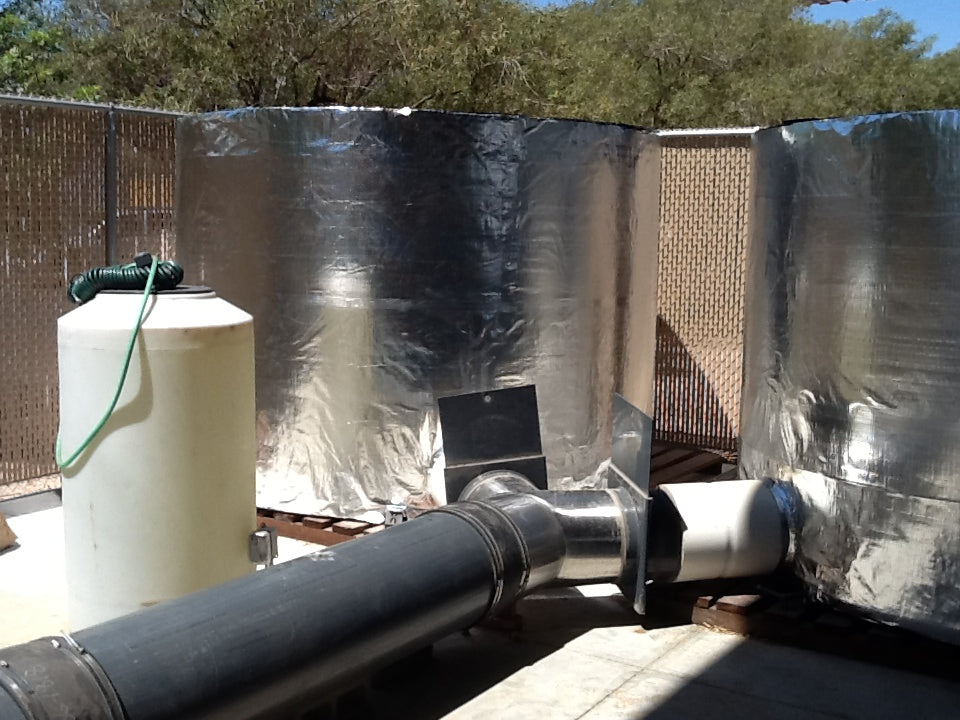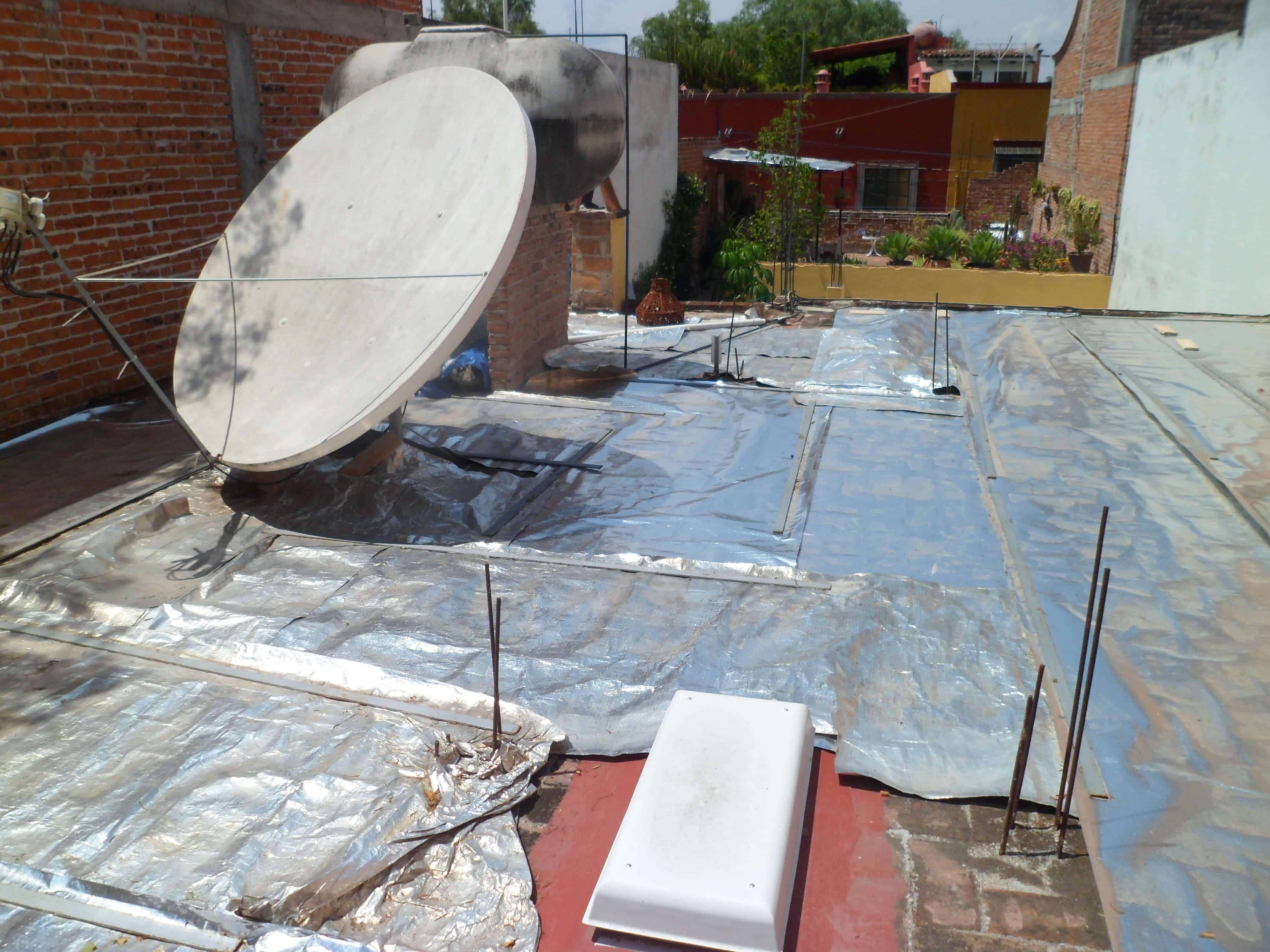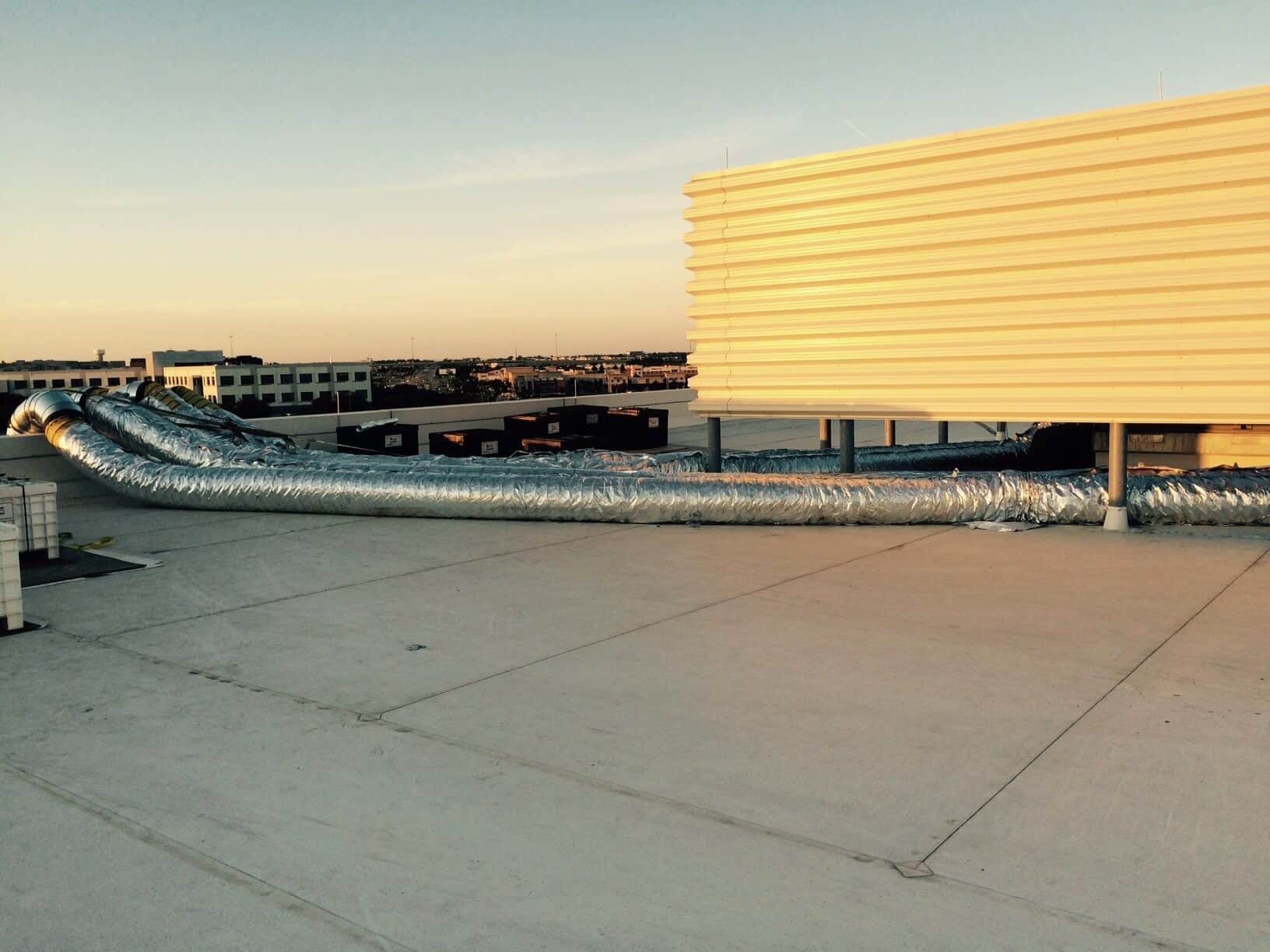Using Radiant Barrier Outside
Typical use of AtticFoil™ is inside of an attic, protecting the foil from exposure to outside elements.
Some people decide to use the foil in outdoor applications like on top of flat roofs, over greenhouses, and even to protect equipment. Below we share some uses customers have tried with success. Remember, even though some of these are applications that AtticFoil™ is NOT designed for, it can do the job.
Using AtticFoil™ outdoors may decrease it's lifespan, especially if it's getting rained/snowed on. Ideally you want to use it in places where there is plenty of ventilation to keep the product dry.
Outdoor Equipment Protection
AtticFoil™ was used to wrap black plastic outdoor scrubber tanks that were exposed to sunlight nearly all day.
This method is effective because the foil is exposed to outside air, allowing it to reflect sunlight away from the tanks, which are typically black and absorb heat efficiently.
AtticFoil™ was selected for this project due to its durability, as other products that use bubbles or fiberglass would not withstand outdoor conditions over time. Although this application is not a typical use for AtticFoil™, customers can expect to get at least a couple of years of use from the foil in this way, possibly even longer.

PGA Media Equipment Protection
We had the privilege of working with CBS Sports when they provided media coverage for the 2011 PGA Tour in St. Johns, Georgia. They introduced us to a creative use for radiant barriers: using the technology to keep their media equipment trucks and vans cooler!
CBS Sports lined the tops of their vans, trucks, carts, and trailers with radiant barriers, which effectively kept the equipment cooler in the daytime sun by protecting it from radiant heat buildup.

As long as at least ONE side of the foil product has an air gap, then the foil will block radiant heat in either direction.
Outside on Flat Roofs & Concrete Buildings
Would laying AtticFoil™ directly on the roofs of these buildings be effective in reducing the heat absorbed by the roof and radiating into the structure below?
Commercial buildings and homes with flat roofs often have poor insulation, leading to uncomfortable living and working spaces. Although this is not a typical use for AtticFoil™, it would work well! Ideally, you should create a system that keeps the foil a couple of inches above the concrete (on the outside/exterior of the structure).
One way to achieve this is by laying out bricks or boards to create a raised platform, then attaching the foil to that platform. We recommend drilling a few 1/2-inch holes through the core to provide additional drainage and prevent pooling and sagging of the foil. This setup keeps the foil from coming into direct contact with the concrete, ensuring it is elevated above the roof where water could collect. Overall, this method works well, and customers have successfully implemented similar solutions on commercial buildings and residences or mobile homes with flat roofs. While this isn't the intended use of AtticFoil™, based on testing and customer feedback, you could expect to get 2-3 years (or more) of service from the radiant barrier.

Covering HVAC Outside
Using AtticFoil radiant barrier to cover outdoor ductwork is an effective way to prevent it from heating up in the sun.
By wrapping the ducts with AtticFoil™, you can reflect sunlight and reduce the amount of heat absorbed by the ductwork. This helps maintain cooler air temperatures within the ducts and increases the efficiency of HVAC systems. AtticFoil™'s durability makes it well-suited for outdoor applications, providing long-lasting protection against the elements and ensuring that your ductwork remains in optimal condition. Because this is an outdoor application, you can expect to get a few years use out of the foil before replacing it, if not more.




